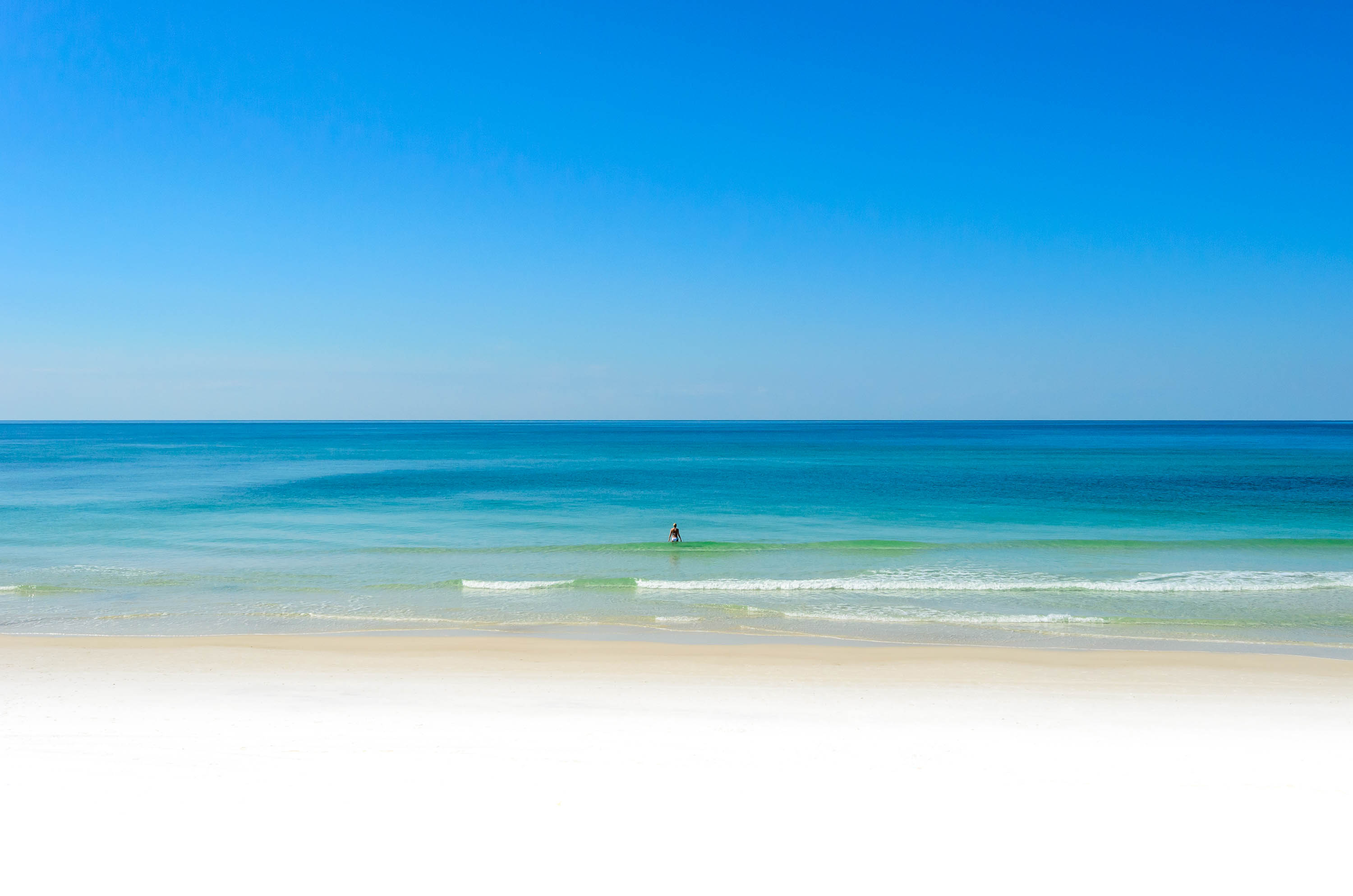pgurney said:
BMBV,
There are generally two different types of walls in this situation: 1) retaining walls that are designed only to hold back soil/sand and 2) seawalls that are designed to hold back the sand/soil and withstand the forces of battering waves, scour and wave overtopping of the wall.
It is my understanding that, in Florida, for an owner to get a permit to build an armoring type of structure on their coastal property the structure must be designed as a seawall, not a retaining wall. The permit application must (in most situations) be accompanied by a report prepared by a qualified Professional Engineer registered in the State of Florida that shows the wall is designed to survive and be stable under the 30-year return storm conditions, that the top elevation of the seawall is higher than the combination of the highest surge plus the crest of the highest breaking wave, that the wall will not cause flooding or adverse impacts to upland property, the design must consider the 30-year erosion line and the design must consider both static and dynamic forces under these storm conditions.
I would hope that if the engineer was qualified and did their job that report would define for you and the state DEP what the 30-year storm conditions are, the 30-year erosion line is and provide the calculations necessary to show your wall has been properly designed. Of course, all of this was complicated by the fact that permits for temporary walls were given. However, even with that complication, a qualified engineer should have known what the Florida laws were and applied them if these seawalls were to become permanent. In my opinion, given the fact they have to do it to permit a permanent wall, a qualified engineer shouldnt be telling you they cant define what storm conditions theyve designed for just because Acts of God arent insured.
The hydrodynamic forces during a storm will likely be many times greater than the static forces for which a retaining wall is designed. Lets say a retaining wall is designed to hold back 15 ft of water. Take that 15 ft of water and apply it to the gulf side of the wall and give it a speed of 40 to 50 mph and then apply this force every thirty seconds or so over the course of a few hours. If the wall is overtopped, then determine the force of the overtopping water rushing back to the gulf in between waves. While doing this, consider that the sand on at least the gulf side of the wall is eroded away within minutes and the anchors tying the wall back are being loosened by the battering waves. Those are the dynamic forces I see happening and retaining walls likely wont survive these conditions because they are not designed to.
What the hell??
Did I just see a bright shining light??
Is it possible??
Am I still dreaming of talking dolphins??
Was I in the sun too long, myself, yesterday while on the bay??
You DEFINITELY win the coveted
"BMBV I'm No Antagonistic Dummy" award
for the most complete and comprehensive post regarding retaining walls that I've witnessed yet. I had asked you to take time to reply, and you did (and I know how long it takes to compose a half decent post).
Sincerely, thank you very much!!
One favor... you know my situation. What is your background and how did you become that familiar with the "retaining wall" vs "seawall" terminology, etc.? Most people don't know the difference. And I have yet to point it out(but I almost did yesterday but fell asleep at the wheel ... I mean keyboard).
I knew when you asked about "hydrodynamic" forces in your previous post that you had a better handle on what's going on more than 99% of the other posters on this message thread.
Therefore, you and I are going in the ring. Problem is, we're probably in the same corner, since you and I (so far) are just trying to exchange factual information and ideas also backed up with factual information.
I'm doing a little a research (DEP's pdf document) as I respond back to you because (to everyone's surprise), I don't know everything there is to know about beach armoring. If my research is wrong, please correct me with your source and we'll go from there.
from pgurney:
"It is my understanding that, in Florida, for an owner to get a permit to build an armoring type of structure on their coastal property the structure must be designed as a seawall, not a retaining wall."
What is the definition of "armoring"?? From DEP (again,
http://www.dep.state.fl.us/beaches/publications/pdf/62b-33.pdf)...
Armoring is a manmade structure designed to either prevent erosion of the upland property or protect eligible structures from the effects of coastal wave and current action. Armoring includes certain rigid coastal structures such as geotextile bags or tubes, seawalls, revetments, bulkheads, retaining walls, or similar structures but does not include jetties, groins, or other construction whose purpose is to add sand to the beach and dune system, alter the natural coastal currents, or stabilize the mouths of inlets.
from pgurney: "The permit application must (in most situations) be accompanied by a report prepared by a qualified Professional Engineer registered in the State of Florida that shows the wall is designed to survive and be stable under the 30-year return storm conditions, that the top elevation of the seawall is higher than the combination of the highest surge plus the crest of the highest breaking wave, that the wall will not cause flooding or adverse impacts to upland property, the design must consider the 30-year erosion line and the design must consider both static and dynamic forces under these storm conditions."
We all know we have to have a "qualified Professional Engineer". But I have searched the DEP's pdf document regarding your statement about 30-year "return storm conditions". I found 19 instances of "30-year", all of them referring to the erosion line which is the water line itself. I searched for every combination of the words "return storm conditions". Nothing found. If you find a reference, PLEASE do share it with me as I will force our engineer to provide documentation to this effect if required. Is there another document that you are referring to that I'm unaware of that "dictates" armoring design? Because honestly, I don't see that kind of detail in DEP's pdf document. There are just too many types of armoring and materials that they permit.
from pgurney: "The hydrodynamic forces during a storm will likely be many times greater than the static forces for which a retaining wall is designed. Lets say a retaining wall is designed to hold back 15 ft of water. Take that 15 ft of water and apply it to the gulf side of the wall and give it a speed of 40 to 50 mph and then apply this force every thirty seconds or so over the course of a few hours. If the wall is overtopped, then determine the force of the overtopping water rushing back to the gulf in between waves. While doing this, consider that the sand on at least the gulf side of the wall is eroded away within minutes and the anchors tying the wall back are being loosened by the battering waves. Those are the dynamic forces I see happening and retaining walls likely wont survive these conditions because they are not designed to."
I'm not sure I quite agree with your visualization of 40 or 50 mile an hour water hitting the wall, but I won't discredit your point, which is a good one. I had the same concerns and voiced this to our original engineer.
Now, let's talk about about hydrodynamic forces.
You are absolutely correct that waves will incessantly batter the wall during a strong enough hurricane. There are great pressures exerted by the inertia of traveling waves. On thing that gives me great comfort regarding this, is that our wall and basically ALL walls are back filled with sand. Once sand is packed down over the course (under its own weight and assisted with rain) of just a few weeks,
it becomes very incompressible.
Now when the water hits the wall, there is basically little to no deflection of the wall itself because of the back pressure of the sand. So far so good.
from pgurney: "If the wall is overtopped, then determine the force of the overtopping water rushing back to the gulf in between waves."
I don't believe this is any significant amount, "hydrodynamically" speaking. Why? Because if the wall is topped by waves, then yes we'll get some sand loss due to scouring on the top... probaby 2,3,4 maybe 5 feet. The wall itself and all the anchors will still be intact. As the water rushes back, it simply goes OVER the wall. I'm sure we can split hairs here, but I think you see what I'm talking about. I don't think it will catch the water like a sail because it most likely will be filled with water to the top anyway. Heck I'll give another 20% load factor due to this effect (if it even exists - see later for calculated loads).
Important!!......
This worse case scenario load then becomes the combined weight of ALL the sand and ALL the water behind the wall just "itching" to get out. This is around 110 to 120 pounds per cubic foot. Also assume it's completely fluid (no help from the "stickiness" of the sand to hold itself up and take load off the wall) which I've been told by one engineer is not exactly the case. But what the hell, I'm a worse case kind of guy when it comes to loading and design.
It now becomes a SIMPLE statics exercise (as opposed to dynamics). Simply take the integral of the pressure up the entire wall. Assume the bottom of the wall (part below sealevel) is holding back half the pressure. The rest of the pressure is distributed to the anchoring system depending on their position and their angle.
Not really that difficult for an engineer.
That's why I designed a little calculator and plugged in these values...
Density of Wet Sand 120 Pounds/cubic foot
Height of Wall (h) 18 Feet
Tieback Spacing 6 Feet Apart
Tieback Angle 15 Degrees from Horizontal
Tieback Distance from Top of Wall 3 Feet Distance from top of wall to where the tieback cable is attached
TIEBACK FORCE = 48,301.85 Pounds (per tieback)
Notice the example above (which is effectively our wall) only has one row of tiebacks (helical screw anchors).
BUT our wall has two walers! This means that there are actually 2 anchors for every 6 feet which significantly reduces the load per anchor.
With me so far? HERE's the MEAT of MATTER... Each of our anchors are rated at 65,000 pounds WORKING LOAD. The holding power IS IMMEDIATELY KNOWN after installation based on the final torque that was achieved during installation. Not much unknown stuff here.
Contrast this to a wood wall I've studied down the beach... it has ONE row of anchor cables tied to pilings (I use that term loosely because they look like toothpicks in comparison to the front pilings and are not driven that far down), and they are spaced 9 feet apart (the wall is effectively the same height as ours). There is a "secondary wall" (term used loosely) that spans the back piling anchors they used that supposedly acts as a deadman.
So simplistically speaking, our wall has 3 (super strong) anchors every nine feet, their's have just 1 (questionable to say the least) plus the supposed affect of the deadman wall. Again quality (even if it was correctly designed) in their wall is suspect to say the least. In other words did the owners get what they paid for?
Synopsis
Maybe you and others can understand more clearly why I say our wall will hold up where others won't. If the wood contractor is sued, he can hide behind the fact that it was built as a temporary retaining wall and not a permanent retaining retaining wall that has the strength of a seawall.
This wall (and walls like it) will fail first. Fact, not fiction.
SOOOOOOOOO..............................
If there's anyone out there who still continues to lump our wall with the crap walls that are out there, I'm not quite sure what else to say to convince them other than they just don't understand fact.
One other thing, don't assume all composite walls will hold up. Some of you in area may have seen a joke of a composite wall getting started in BMB east of the 83 public access.
It just shows you that EVERYTHING has to come together for a wall to be successful....material strength, wall design AND quality of installation.
pgurney, if you can share any more information about where you think there is a requirement for the engineer to specify the "rating" of the wall in terms of hurricane category or the like, PLEASE PLEASE let me know.
This can only help us in our ordeal and would be much appreciated.
With MUCH Thanks!!!!!
Sincerely,
BMBV
















